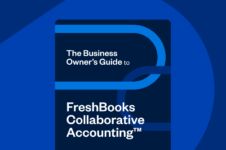According to Fundbox’s research, your biggest clients can take the longest to pay SMBs. Even when you’ve agreed on terms, such as Net 30 or 45, these companies can still pay late.

Landing a large corporate client is a huge milestone for any freelancer. When you get that signed contract with your first big corporate customer, you might feel like you’ve finally made it. However, working with bigger companies has its downsides, most notably for your invoices and cash flow. That’s because larger companies tend to have longer payment terms and very specific invoicing requirements that can lead to difficulties or delays in getting paid.
We’re all affected by late-paying clients, but according to Fundbox’s research, large corporations can take the longest to pay SMBs. Even when you’ve agreed on terms, such as Net 30 or 45, these companies can still pay late. When you bill a large corporation, your invoices follow a lengthy process and cross many desks before the payment is issued. If something goes wrong along the way, then the process stops and payment is delayed.
Here are some specific things you can do to make sure your invoice doesn’t get lost in the corporate shuffle, so you can get paid faster.
Make Sure You’ve Completed all the Necessary Paperwork
Your client has accepted your proposal and you’re ready to start work. Not so fast. Right from the start, make sure you complete all the contractual and financial paperwork your client needs. Review each document, then sign and return it to the right contact. If they are paying you by direct deposit, ask for that form upfront and don’t wait until it’s time to bill. If you aren’t sure what paperwork is required, ask your contact directly at the start of the project.
Once your paperwork is complete, the client will likely then give you a purchase order (PO) number. Make sure you get that, too. If your client uses PO’s, you probably can’t invoice without one.
Find Out Who You Will Invoice
Should you send the invoice to your day-to-day point of contact, directly to Accounts Payable, or someone else? If your invoice doesn’t land in the correct inbox, you’re already delaying payment.
Find out as soon as you have a signed contract, then keep a record of that person’s contact information. You’ll need it if you need to chase payment later, too. Furthermore, since large companies often operate several business units, make sure you know which entity you are billing—it might not even be in the same city as the one your usual contact person is in!
Follow Their Billing Requirements
You may think your standard invoice is good enough for every client, but it might not be. Each client may ask to see different information on your bill, and larger companies are notoriously rigid about this. If the right information doesn’t appear on your invoice, you might find your invoice rejected and need to resubmit it, further delaying your payment. The best way to find out what needs to appear on that invoice? Ask, right up front.
Aside from your billing address and agreed terms, things to expect are:
- Your PO number—make sure this is displayed prominently
- Project name and project code
- Labor category (this often comes up on government-related contracts)
- Hours worked
- Hourly rate
- Description of the work you completed
- Tax rate
Keep Your Invoices Simple
Accounts payable teams are busy people who deal with hundreds of documents a day. Make sure your invoice is presented in a way that is easy for them to process. Minimize fuss and colorful designs. Stick to something simple—that way it’s easily printed, scanned, and read.
Know How They Prefer to Pay
Many large companies use direct deposit or payment apps like Bill.com. Find out what your client uses and make sure you are set up to receive those payments. This will minimize any late payment issues due to technical difficulties.
Have a Backup Plan
Since big corporations are notorious late-payers, have a plan in place to mitigate any cash flow issues that could arise because of overdue or slow payments. For example, you may want to build up some cash reserves or apply for a line of credit during times of relative financial stability. That way, you’ll know you have access to extra capital in a hurry, should you find yourself waiting for an unusually large payment from your new star corporate client to appear.
A version of this article originally appeared on the Fundbox small business blog.

Written by Irene Malatesta, Senior Content Marketing Manager and Editor
Posted on September 5, 2018
![12 Silly Invoicing Mistakes That a Cloud Accounting Solution Will Save You From Making [Infographic] cover image](https://prod-blog-k8s.freshenv.com/blog/wp-content/uploads/2017/11/invoicing-mistakes-1-600x401.jpg) 12 Silly Invoicing Mistakes That a Cloud Accounting Solution Will Save You From Making [Infographic]
12 Silly Invoicing Mistakes That a Cloud Accounting Solution Will Save You From Making [Infographic]





